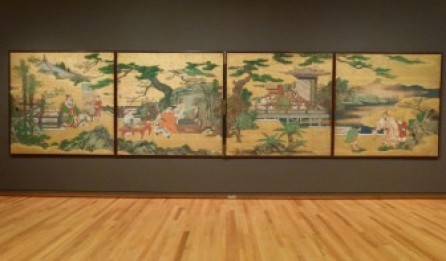Not Your Ordinary Screen Savers
Apropos the fabulous Golden “Bamboo and Poppies” Kanō school screens, and the other famous and beloved screens currently displayed in Luminous: The Art of Asia, the Seattle Art Museum’s collection of approximately 70 Asian screens, has been recently rehoused in the best state-of-the-art storage cabinets available thanks to a generous federal grant from the Institute of Museum and Library Services (IMLS).
SAM’s significant collection of Asian screens includes paintings of singular artistic and cultural importance. The screens range in date from the sixteenth century to the twentieth century. Together with our collection of hanging scrolls, they convey to visitors an experience of splendid art and vivid impressions of the story of painting in Japan, China and Korea.
Although SAM’s collection has a handful of Chinese wood, lacquered and cinnabar panel screens, the bulk of the collection is comprised of Japanese and Korean painted screens. The Japanese screens at SAM fall into two categories, the byōbu, or folding screens (from two up to eight panels) and the fusuma, or sliding screens, typical partitions used to divide large rooms in temples or castles. Both of these styles are represented in Luminous.
